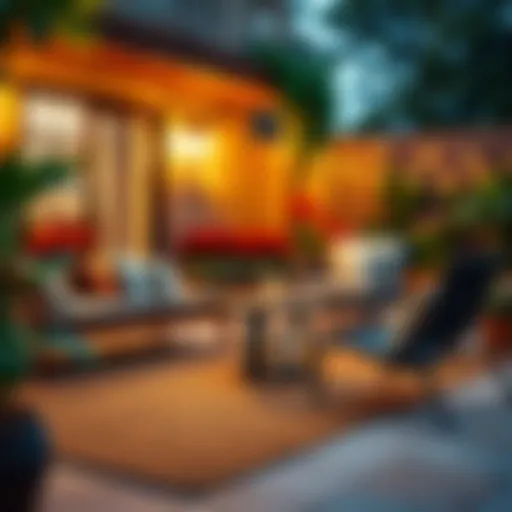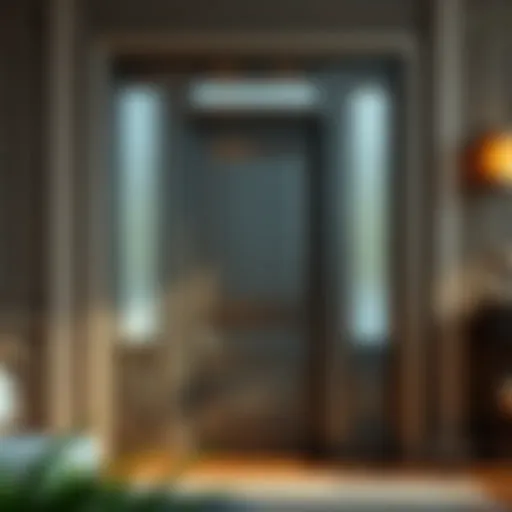Exploring Lerhyttan: Furniture and Interior Design
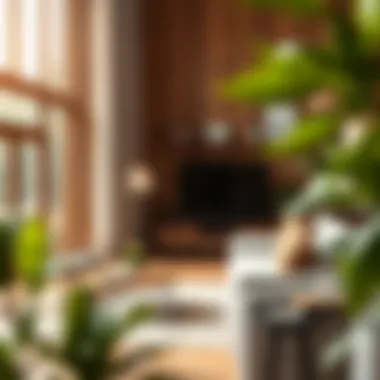
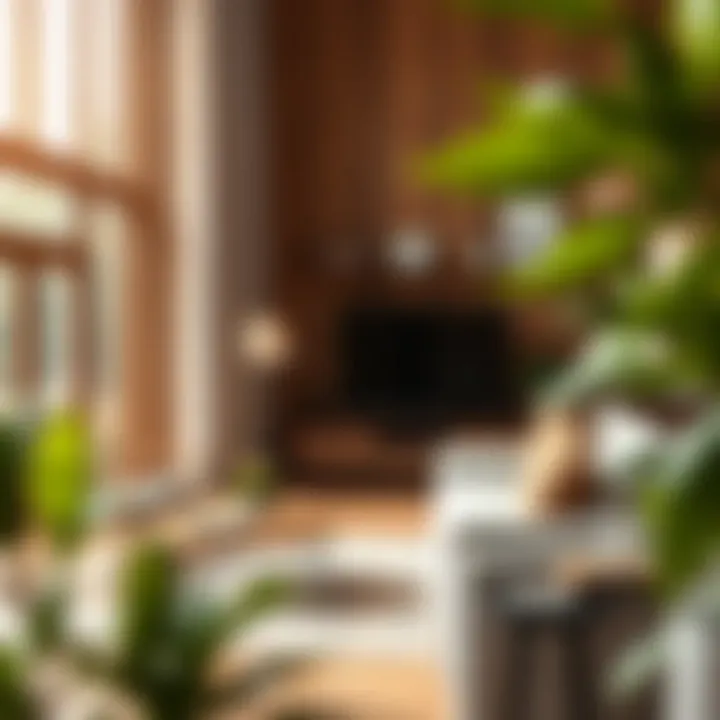
Intro
Lerhyttan is not just a word; it encapsulates a philosophy, a way of looking at furniture and interior design that marries beauty with utility. This concept, rooted in history yet vibrant in contemporary contexts, calls for a rethinking of how we approach the spaces we inhabit. At its heart, Lerhyttan recognizes that our environments shape our experiences, influencing our mood and overall well-being.
Understanding Lerhyttan requires us to peel back layers, exploring its beginnings and the principles that make it stand out in the world of design. It’s a journey that leads us through historical insights, presents myriad ways to adapt these ideas in our homes, and encourages sustainable practices that reflect our values.
As we dive into the dynamics of Lerhyttan, we’ll consider current furniture trends that resonate with its ethos. We'll unravel popular color palettes that breathe life into this design philosophy and offer practical tips for homeowners, designers, and DIY enthusiasts eager to bring the essence of Lerhyttan into their spaces.
In an age where personalization is key, the goal here is to empower individuals to create environments that echo their style while maintaining functionality. Let's embark on this thorough exploration of Lerhyttan, where design is more than decor—it's a reflection of life itself.
Prelims to Lerhyttan
The exploration of Lerhyttan is crucial for anyone interested in the balance of beauty and function in interior spaces. This unique approach reflects more than just a design aesthetic; it embodies a philosophy that values the marriage of visual appeal and everyday utility. By understanding Lerhyttan, homeowners, designers, and DIY enthusiasts can cultivate spaces that are not only stylish but also practical and sustainable.
Defining Lerhyttan
Lerhyttan refers to a specific school of thought in furniture and interior design that emphasizes simplicity, functionality, and an organic connection to nature. Originating from Scandinavian influences, the term encompasses a design ethos that promotes minimalism while ensuring comfort and warmth. This style doesn’t merely prioritize how a space looks; it also considers how it feels and functions in daily life.
Lerhyttan revolves around the selection of natural materials, such as wood and textiles, that create a warm ambiance. This connection to nature is fundamental, as it encourages an environment that promotes well-being and contentment. Furthermore, the designs often embody a handcrafted quality, showcasing the workmanship that goes into each piece, whether it’s a beautifully carved chair or a meticulously designed table.
The Evolution of Design Principles
Design principles within Lerhyttan have evolved over time, influenced by various cultural and historical factors. Traditionally, this style emerged from the need to create spaces that were both functional and aesthetically pleasing in the context of Nordic life, where long winters demanded coziness and warmth.
- Historical Influences: The long-standing traditions of craftsmanship in Sweden, Norway, and Denmark significantly shaped the characteristics of Lerhyttan. Craftspeople employed local resources, resulting in pieces that resonate with their environment. As global trends started to weave into this tapestry, contemporary interpretations began introducing new materials and technologies into the mix.
- Modern Adaptations: Today, Lerhyttan continues to grow, adapting to modern needs and lifestyles while maintaining its core values. The shift towards eco-friendly materials and designs has led to an emphasis on sustainability, with practitioners innovatively utilizing reclaimed and sustainably sourced resources.
The dialogue between past and present ensures that Lerhyttan remains relevant. By understanding and embracing these evolutions, individuals can create living environments that reflect not only their personal tastes but also their commitment to sustainability and quality living.
Lerhyttan signifies more than just a style; it’s a lifestyle choice that respects both heritage and future possibilities.
Historical Context of Lerhyttan
Understanding the historical context of Lerhyttan provides crucial insights into how this design ideology emerged and evolved over the generations. It isn’t merely a trend but a reflection of cultural shifts, technological advances, and shifting societal values that have shaped the way we think about furniture and interior spaces. The story of Lerhyttan is a tapestry woven with various cultural influences, key figures, and design movements, which marks its distinctive characteristics while contributing to its timeless appeal.
Cultural Influences in Furniture Design
In the landscape of furniture design, various cultures have left their mark, creating a rich mosaic of styles and philosophies. The Lerhyttan style is no exception. Originating from the Nordic tradition, it reflects a particular respect for craftsmanship, sustainability, and the natural world.
- The Scandinavian approach is pivotal, emphasizing minimalism and functionality. In Lerhyttan design, you'll notice clean lines and an absence of clutter, closely aligned with this philosophy.
- Traditional craftsmanship from regions like Sweden and Norway also plays an important role. The art of handcrafting furniture using local materials fosters an intimate connection between the maker and the product, essential in Lerhyttan's ethos.
- Additionally, the shift toward industrialization has revolutionized how furniture is produced. This transition has led to innovative materials and methods while still cherishing the roots of traditional design practices.
The culmination of these influences gives Lerhyttan a unique voice, resonating with homeowners and designers alike who are keen on marrying aesthetic appeal with sustainable practices.
Key Figures and Movements
To understand Lerhyttan more deeply, one must acknowledge the prominent figures and movements that have impacted its development.
- Influential designers like Alvar Aalto and Arne Jacobsen championed such principles in their work, blending functionality with elegance, which reflects in the Lerhyttan aesthetic. Their visions paved the way for future generations to embrace this organic approach to design.
- The mid-century modern movement also significantly influenced Lerhyttan, prioritizing harmony between indoor and outdoor spaces. This aligns with the philosophy that spaces should not merely be functional but should resonate with the surroundings.
- As we look to contemporary trends, the rise of eco-design movements has added another layer to Lerhyttan. The increasing awareness around sustainability and the demand for eco-friendly materials has led to a burgeoning acceptance of practices such as upcycling and embracing local craftsmanship.
"Historical context isn't just about looking back; it also helps us to understand the aspirations that drive our present designs."
These key figures and movements contribute to an understanding of the ongoing relevance of Lerhyttan. They remind us that design is always in dialogue with history, culture, and the needs of society. In the next sections, we will continue tracing this influence forward, illustrating how these historical foundations inspire practical applications that resonate with modern living.
Core Principles of Lerhyttan
The core principles of Lerhyttan represent the foundational guidelines that shape furniture and interior design within this unique stylistic approach. They focus on creating spaces that are not only visually appealing but also functional and sustainable. Understanding these principles is crucial for anyone looking to infuse their interiors with warmth, balance, and a sense of belonging. Let’s dissect these elements more closely.
Balance and Proportion
When discussing balance and proportion in Lerhyttan, it’s vital to appreciate how they bring a sense of harmony to a space. Think about it: when you walk into a room, something feels right when a chair aligns with a table in size and shape. The scale of objects should complement one another. A towering bookshelf can dominate a small room, while dainty furniture can sometimes get lost in a spacious setting.
Key Thought: Achieving balance isn’t about symmetry alone; it’s about finding a pleasing arrangement that doesn’t overwhelm or underwhelm the eye.
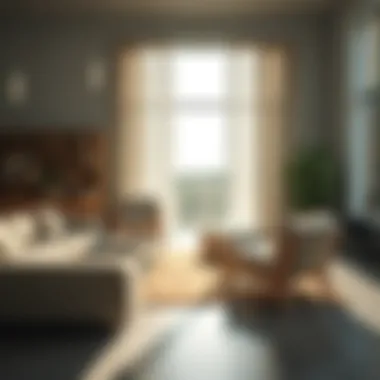
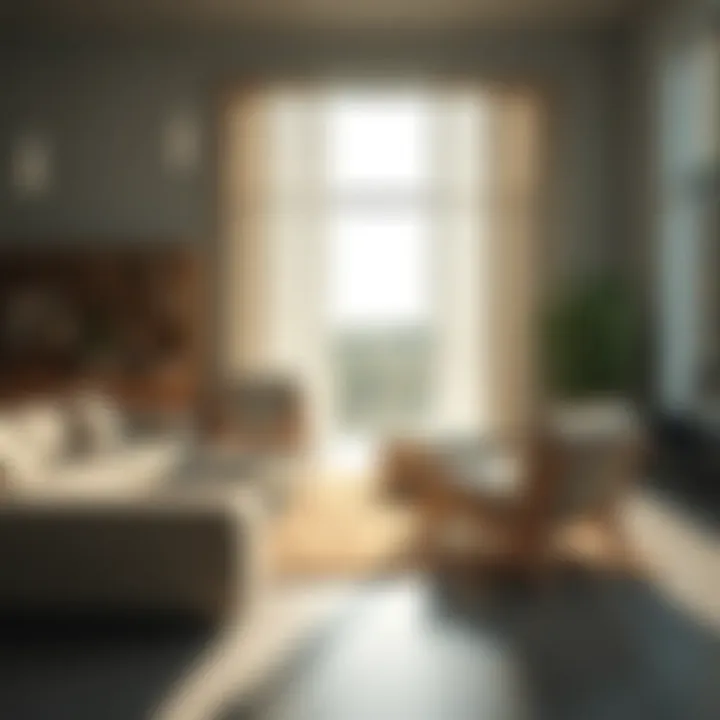
Consider this strategy: the golden ratio, often found in nature, is utilized to establish pleasing proportions. A room where elements are thoughtfully spaced can create a seamless flow that naturally draws the eye through the design. For instance, placing a large sofa against the wall can provide a grounded focal point, surrounded by softer colors or textiles that encourage comfort.
Emphasis on Functionality
In the world of Lerhyttan, functionality isn’t merely an afterthought; it’s a guiding principle. This focus means that each piece of furniture not only serves its intended purpose but also enhances the overall user experience. Just consider a side table that doubles as a storage unit or a coffee table featuring nesting pieces.
When selecting furniture, question its utility. Will it improve daily routines? Can it easily adapt to different activities?
- Multi-purpose furniture is at the heart of Lerhyttan’s philosophy.
- Drafting tables that transform into dining tables make it effortless to host, while ottomans with removable tops provide hidden compartments.
A good design answers these questions while avoiding excess clutter. This approach encourages simplicity, aiming for fewer, more meaningful pieces instead of a myriad of useless objects.
Sustainable Design Practices
Sustainable design is central to Lerhyttan, reflecting its respect for nature and the environment. This is not just a trend; it is an ethical commitment woven into the fabric of the design philosophy. Incorporating natural materials free from harmful chemicals promotes healthier living spaces.
Consider these factors:
- Environmentally conscious sourcing of wood and fabrics.
- Utilization of recycled materials.
- Energy-efficient manufacturing processes.
The use of natural fibers like cotton, linen, or wool not only enhances aesthetic appeal, it also sustains local economies. Furthermore, embracing timeless designs can combat the throwaway culture, promoting durability in both style and substance.
In summary, Lerhyttan’s core principles—balance and proportion, emphasis on functionality, and sustainable practices—serve as a versatile framework for crafting interiors that resonate with the present while respecting the future. Adoption of these practices encourages not just a beautifully designed space but one that feels inherently connected to the lives of those who inhabit it.
"Design is not just what it looks like and feels like. Design is how it works." - Steve Jobs
By embracing these principles, homeowners and designers alike can create environments that are not only stylish but also serve the needs of their inhabitants, fostering a sense of community and individual well-being.
Integrating Lerhyttan into Modern Spaces
Integrating Lerhyttan into modern spaces is no small feat, but when done right, it puts a cherry on top of any interior. This design philosophy, rich in heritage and practicality, emphasizes balancing aesthetic charm with functional needs. It's not just about throwing a trendy couch in the corner; it’s about weaving elements of Lerhyttan through the fabric of everyday life.
At the heart of this integration lies the concept that spaces should reflect both the individual’s taste and the environment they inhabit. Homeowners and designers alike must consider factors such as layout, colors, and furniture functionality. The beauty of Lerhyttan lies in its versatility. Whether it's a spacious loft or a snug studio apartment, the principles can be adapted to suit various scales and styles.
- Emphasizing Harmony: In Lerhyttan design, each piece of furniture harmonizes with its surroundings. This connection fosters a feeling of cohesion in the space, pulling everything together beautifully.
- Mindful Layouts: Whether you're designing a new build or refreshing an old space, the layout should encourage flow and functionality. A well-planned room encourages movement and interaction, promoting a harmonious living experience.
Before jumping into design, one must think critically about the space’s purpose. Is it for entertaining friends? Quiet evenings during a storm? Understanding how a space is used can guide furniture selection and layout decisions. There’s not much use in filling a room with items that, while lovely, don’t suit how it will be used.
Ultimately, integrating Lerhyttan principles results in spaces that resonate with those who inhabit them.
Analyzing Contemporary Interiors
Contemporary interiors provide an excellent backdrop to explore how Lerhyttan can be implemented effectively. Today, the design landscape embraces elements from various styles, which means there's ample opportunity to incorporate Lerhyttan principles.
A visual inspection of modern homes often reveals a love for minimalism. Here, less is more takes center stage. The furniture is often sleek and uncomplicated, yet exudes elegance. For instance, a simple wooden coffee table, which might seem mundane, can elevate a room when crafted using sustainable materials characteristic of Lerhyttan.
Consider how space is regularly filled with oversized furniture that may end up cramping the style rather than enhancing it. Aiming for lighter-colored pieces can help keep the feel airy. Large windows inviting natural light into a room can further give off that spacious ambiance. With careful attention to proportion and scale, designers can help ensure that even the smallest of spaces don’t feel cluttered.
What’s interesting is the emotional impact of these choices. A thoughtfully designed room invites creativity and comfort. When people feel good in their environment, it can uplift their mood and even enhance productivity.
Case Studies of Successful Implementations
Several case studies showcase the successful integration of Lerhyttan principles into modern spaces. One striking example is a recent renovation project in Stockholm, where an old brownstone was modernized yet retained its historical character. Here, designers used natural wood finishes and earth-toned colors to create a vibrant but peaceful ambiance.
- Case Study 1: The Stockholm Brownstone
- Case Study 2: Urban Loft Space
- The use of reclaimed wood for flooring mixed with modern furnishings showed a commitment to sustainability.
- Open shelving in the kitchen not only provided functionality but also displayed the owner's curated collection of ceramics, harmonizing the appearance of simplicity and elegance.
- A loft in Berlin embraced Lerhyttan principles through multifunctional furniture. A couch that folds out into a guest bed exemplified how practical solutions can also charm residents with aesthetic appeal.
- The decor used a tranquil palette inspired by nature, creating an oasis amidst the hustle and bustle of city life.
In each of these cases, potential homeowners and designers can see the benefits of applying Lerhyttan principles, promoting sustainability and a balance between utility and beauty.
Role of Color in Lerhyttan Design
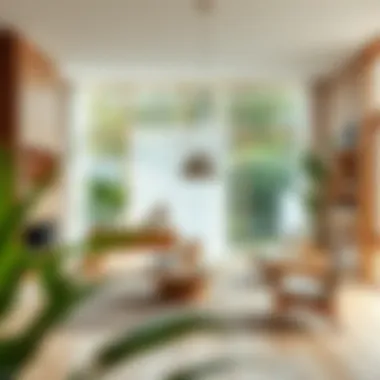
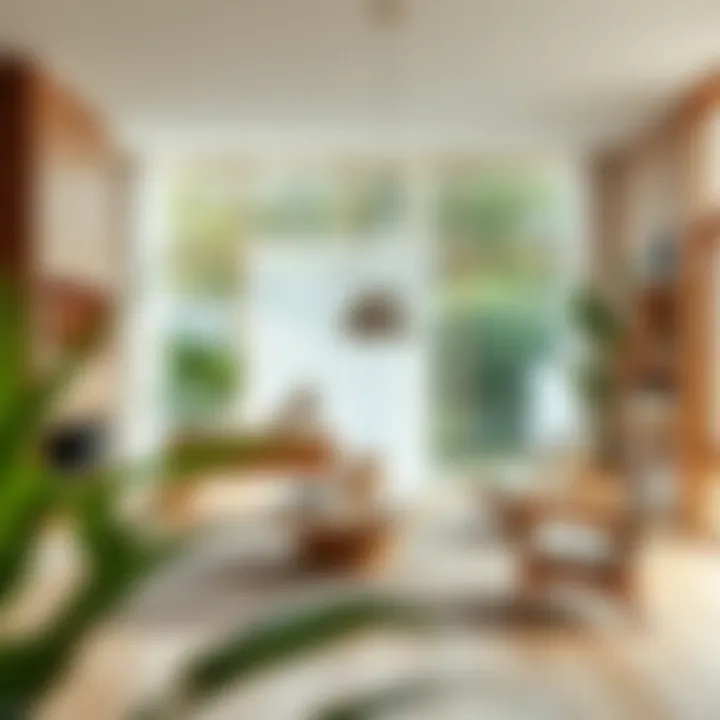
Understanding the role of color in Lerhyttan design is fundamental for achieving a harmonious environment. Color doesn't merely paint a mood; it sets an entire atmosphere, echoing the principles that Lerhyttan embodies—balance, functionality, and a deep connection with nature. With colors, a space can be inviting or too stark. Known for its bold yet tasteful use of hues, Lerhyttan encourages choices that not only complement the physical elements of furniture but also appeal to the emotional resonance of the spaces we inhabit.
Psychological Impact of Color on Spaces
Colors can play tricks on our minds, influencing our emotions and perceptions. When selecting a color palette for your living space, always remember that hues can evoke responses that are both subtle and profound.
For instance, soft blues and greens tend to soothe, creating a calming atmosphere reminiscent of a gentle breeze or a peaceful forest. Conversely, yellows can invigorate a room, sparking creativity and enthusiasm, often evoking the sense of sunlight streaming through a window.
Here are a few vital points about how color works psychologically:
- Warm Colors: Shades like reds and oranges can stir up excitement. These are better used in areas meant for social interactions.
- Cool Colors: Blues and purples provide tranquility. Best for personal spaces where relaxation is key.
- Neutrals and Earthy Tones: These colors ground a room, allowing other design elements to shine without feeling overwhelming.
By sifting through your options, you'll find a wealth of opportunities to resonate emotionally with your space.
"Color is a power which directly influences the soul." – Wassily Kandinsky
Color Palettes Inspired by Nature
Lerhyttan advocates for designs that mirror the organic intricacies found in nature. This philosophy extends beautifully into color selection. Drawing from outdoor landscapes can enrich your indoor environment, where every shade harmonizes with its elements.
Take, for example, a color palette inspired by an autumn forest:
- Rich browns from tree trunks
- Burnt oranges representing leaves
- Muted greens reflecting moss and evergreens These colors not only create a welcoming atmosphere but evoke a sense of nostalgia and comfort, enhancing your interior space.
Another approach is the coastal palette:
- Soft, sandy beiges
- Deep navy blues
- Grassy greens akin to dunes This selection brings freshness and clarity, mimicking the serenity of oceanfront scenes.
In exploring these natural inspirations, reflect upon how they can transform your home, cultivating a deeper appreciation for both the interior and exterior worlds.
Adopting the Lerhyttan approach to color integrates personality and warmth into your living areas, ensuring that every hue serves a purpose while maintaining a stunning aesthetic.
Furniture Selection in Lerhyttan
Choosing the right furniture has always been a pivotal aspect of interior design, but in the context of Lerhyttan, it transcends mere aesthetics. It becomes a conscious act of crafting a living space that echoes personal values while aligning with functionality. Getting furniture selection right in Lerhyttan means looking for pieces that not only fit visually but also enhance the overall harmony of a space. In this section, we will explore two significant areas: the importance of selecting sustainable materials and the integration of multifunctional pieces into the Lerhyttan approach.
Choosing Sustainable Materials
When it comes to furniture selection in Lerhyttan, sustainable materials hold a special place. The global push for eco-friendly practices has found its way into interior design, and Lerhyttan stands as a beacon for this movement. Furniture crafted from sustainable materials not only minimizes environmental impact but also infuses a sense of authenticity into spaces.
To start, here are a few key benefits of choosing sustainable materials:
- Environmental Responsibility: Using materials like reclaimed wood, bamboo, or recycled metal reduces waste and conserves resources.
- Healthier Living Spaces: Sustainable options often come without harmful chemicals, contributing to better indoor air quality.
- Distinct Character: Furniture made from natural sources may have unique textures and colors, adding personality to your decor.
When selecting materials, homeowners can consider a multitude of options that align with the principles of Lerhyttan: oak, birch, and pine are well-regarded for their durability and sustainability. These woods not only boast excellent craftsmanship but also establish a timeless appeal, perfect for the balance Lerhyttan promotes. In a world teeming with fast furniture, leaning towards sustainably sourced pieces is an investment in longevity.
Incorporating Multifunctional Pieces
In the bustling urban living landscape, where square footage is often at a premium, multifunctional furniture becomes a cornerstone of Lerhyttan design. Emphasizing utility without compromising style, these pieces help optimize space while still looking exquisite. By integrating such elements, interiors can adapt to various needs, ultimately enhancing the functionality of a space.
Here’s how incorporating multifunctional pieces can benefit Lerhyttan-inspired interiors:
- Space Efficiency: A sofa bed or an ottoman with storage decreases clutter and cleverly utilizes every inch of the room.
- Cost-Effectiveness: Investing in fewer, versatile pieces can save money in the long run, allowing for a coherent design without breaking the bank.
- Versatility in Design: Transitioning a room from a home office to a relaxed evening space can be seamless with the right furniture choices.
Examples of multifunctional furniture include modular sofas that can be rearranged easily or dining tables that can expand to fit guests. Such designs resonate with Lerhyttan's core principle of functionality, making them irreplaceable additions.
"Choosing the right furniture reflects not just an eye for design but also a commitment to creating meaningful and sustainable environments."
With furniture selection guided by sustainable materials and the incorporation of multifunctional items, the Lerhyttan ethos thrives, creating spaces that are not only functional but also aesthetically pleasing. The beauty of this approach lies in its ability to adapt, evolve, and resonate with diverse lifestyles, reinforcing the relevance of Lerhyttan in modern furniture and interior design.
Lerhyttan and Space Optimization
The concept of space optimization within the sphere of Lerhyttan is paramount, as it intricately weaves together form and function in a way that enhances living environments. Lerhyttan furniture isn’t just about aesthetics; it’s designed to cater to the demands of modern lifestyles while maintaining a firm grip on sustainability. The incorporation of this design philosophy ensures that every inch has purpose, making it especially appealing to homeowners and designers keen on maximizing functionality without compromising style.

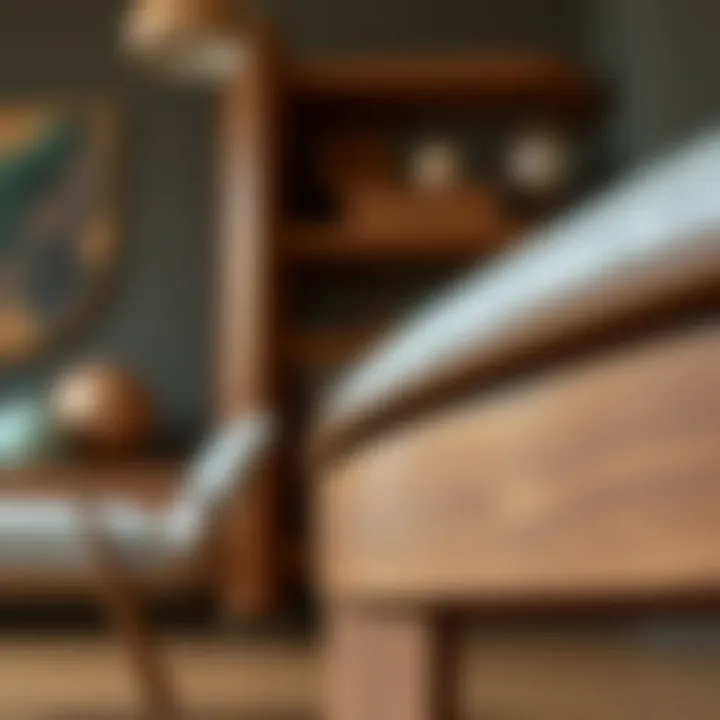
Techniques for Small Spaces
In compact living spaces, every square foot counts. Lerhyttan furnishes this challenge with ingenious techniques crafted for small areas. Here are several strategies that can transform a tight space into a functional haven:
- Multi-Functionality: Opt for furniture that serves more than one purpose. For instance, a coffee table that doubles as a storage unit or a sofa bed can dramatically reduce clutter while enhancing usability.
- Vertical Storage: Instead of expanding horizontally, think vertical. Utilizing wall-mounted shelves or tall cabinets can help in organizing items while keeping the floor space open. This method not only maximizes storage but also creates an illusion of height, making rooms feel more spacious.
- Light Colors and Mirrors: Light palettes can brighten a room and make it feel larger. Pairing these hues with mirrors can amplify this effect, reflecting light throughout the space to create an airy ambiance.
- Transparent Furniture: Acrylic or glass furniture can trick the eye. Such pieces take up less visual weight, thereby allowing spaces to feel less cramped without sacrificing style.
Creating Open Concepts
Open concept designs embody the essence of Lerhyttan by fostering a seamless flow between spaces. This approach eliminates unnecessary barriers, promoting both interaction and functionality. Here’s how to effectively execute an open concept:
- Strategic Zoning: Use area rugs, lighting, or furniture arrangement to delineate different functions within an open space. This can be subtle yet effective in defining areas for relaxation, work, or dining without solid walls.
- Flow with Furniture Arrangement: The way furniture is positioned can guide movement throughout the space. A layout that encourages easy navigation makes the whole area feel cohesive and inviting.
- Use of Natural Light: Incorporate large windows or glass doors to flood spaces with natural light. The introduction of daylight can significantly enhance the overall mood of an open layout and create a sense of connectivity with the outdoors.
- Consistent Design Language: Maintain a cohesive design palette across the open areas. This helps in creating a harmonious visual flow that engages the eye and draws attention to the purposeful interactions within the space.
"An effective open layout is not only aesthetically pleasing; it invites a sense of community and warmth, essential for modern living."
When embracing Lerhyttan in the pursuit of space optimization, the result is a tranquil living environment that manages to balance style, functionality, and sustainability. With these techniques, both designers and homeowners can cultivate spaces that fulfill their needs while echoing the principles of this elegant design ideology.
Impact of Technology on Lerhyttan
The infusion of technology into the realm of furniture and interior design has not just created waves but has fundamentally altered the very fabric of how we curate our living spaces. In the context of Lerhyttan, a design philosophy that marries form with function, technology plays a pivotal role. This section examines the intricate relationship between technological advancements and Lerhyttan, revealing how each complements and elevates the other.
Smart Furniture Innovations
Smart furniture represents the marriage of tradition with cutting-edge technology, allowing for enhanced utility without sacrificing aesthetic appeal. Picture a coffee table that can charge your devices wirelessly or a sofa integrated with speakers for a sleek entertainment experience. These are not just novelties; they serve crucial purposes in modern living spaces.
- Space Efficiency: In urban settings, where every square foot counts, smart furniture is designed to maximize functionality. For instance, a dining table that extends or shrinks based on the number of guests can reduce clutter while still providing elegance.
- Connectivity: With the rise of the Internet of Things, smart furniture can seamlessly integrate with other home tech. Smart lighting, temperature controls, and entertainment systems can all be managed from a single point of access, creating a cohesive living environment.
- User-Centered Design: Innovations focus on understanding users' needs. Designers create furniture that adapts to various lifestyle requirements, making the home office setup versatile or the living room adaptable for various social functions.
"Smart furniture doesn't just serve a purpose; it revolutionizes how we interact with our spaces."
Virtual Reality in Design Planning
Virtual reality (VR) tools in design planning are pushing boundaries further than ever imagined. With VR, designers and homeowners alike can walk through their spaces before a single piece of furniture is placed. This immersive experience allows for intricate evaluations of scale, layout, and color schemes, directly aligning with Lerhyttan’s principles of balance and proportion.
- Enhanced Visualization: VR provides a 3D model that offers designers and clients the ability to visualize spaces in depth, enabling more informed decision-making. Gone are the days of static blueprints.
- Error Reduction: By experiencing a design virtually, common pitfalls can be identified before physical work begins. Mistakes that could lead to costly alterations are minimized.
- Collaborative Opportunities: This technology fosters easy collaboration between clients and designers, even from miles apart. Clients can convey their thoughts clearly, and designers can make adjustments in real time.
As we look to the future, it is clear that technology shapes Lerhyttan’s narrative. The strides in smart furniture and virtual reality not only enhance how spaces are designed but also reflect the essence of Lerhyttan—integrating beauty with functionality, all while addressing the ever-evolving needs of contemporary living.
The Future of Lerhyttan
The concept of Lerhyttan is not just a passing phase in the world of design; it is poised to evolve further and make significant strides in the years to come. As we step into an era where sustainability and functionality are no longer just options but essentials, Lerhyttan's principles will likely be at the forefront of interior design discussions. This section will explore emerging trends and potential challenges that could shape the trajectory of Lerhyttan, offering valuable insights for homeowners, designers, and DIYers alike.
Emerging Trends to Watch
- Sustainable Materials: As awareness of eco-friendly practices spreads, the use of sustainable materials in furniture design is gaining momentum. More designers are turning to recycled woods, organic fabrics, and other Earth-friendly materials, keeping Lerhyttan's core value of sustainability alive.
- Biophilic Design: The merging of nature with interior spaces is becoming a significant focus. Biophilic design incorporates natural elements into indoor environments, mimicking nature’s patterns and forms. By doing this, spaces can foster a sense of well-being and connection to the outdoors.
- Smart Technology Integration: The rise of smart homes means that furniture, too, is adapting. Lerhyttan will embrace technology that enhances functionality without sacrificing aesthetics. Imagine a coffee table that turns into a workstation with just a push of a button.
- Minimalism and Clarity: Expect a continued shift towards minimalist design, emphasizing clarity and simplicity—less clutter, more purpose. This aligns well with Lerhyttan's emphasis on functionality.
- Personalization and Customization: More consumers are seeking unique design solutions that reflect their personal style. Offering customizable furniture options allows designers to cater to individual needs while maintaining the principles of Lerhyttan.
Potential Challenges Ahead
- Supply Chain Issues: With the recent global events, the supply chain for sustainable materials may face hiccups. This disruption could lead to delays in production and increase costs, challenging the affordability of Lerhyttan-inspired designs.
- Balancing Tradition and Innovation: As designers adopt new technologies and materials, there is the risk of deviating from authentic Lerhyttan principles. Striking a balance between traditional design values and innovative practices will be crucial to retain the essence of this style.
- Consumer Education: An ongoing challenge is educating consumers about why sustainable choices matter. Without understanding the importance of these elements, many might overlook Lerhyttan’s inherent benefits in favor of more visually appealing but less functional options.
- Market Saturation: As Lerhyttan becomes more trendy, there's a danger of it becoming oversaturated, leading to a diluted representation of its original intentions. Distinguishing between the authentic approaches versus mere imitations will be essential for designers.
Epilogues on the Relevance of Lerhyttan
Lerhyttan represents more than just an approach to furniture and interior design; it encapsulates a philosophy that intertwines aesthetics with utility. This section seeks to elucidate the fundamental relevance of Lerhyttan in today's ever-evolving design landscape, reflecting on its core principles and the benefits it offers for modern living spaces.
Lerhyttan's Enduring Influence
The influence of Lerhyttan resonates throughout various design environments. Its core tenets, rooted in harmony and functionality, have made a lasting impact on how spaces are crafted and utilized. One sees this visibly in various examples:
- Holistic Design: Unlike many contemporary styles that emphasize trend and extravagance, Lerhyttan prioritizes a balanced approach, effectively weaving together beauty and practicality. For instance, Scandinavian designs often reflect this ethos, utilizing natural materials and clean lines while ensuring that every piece serves a purpose.
- Sustainability: In an age where environmental consciousness is paramount, Lerhyttan champions sustainable practices, encouraging designers and homeowners alike to consider the ecological footprint of their choices. By focusing on renewable materials and timeless designs, it fosters a culture of longevity over disposability.
- Cultural Adaptability: Lerhyttan adapts to diverse cultural contexts, making it applicable across various regions and styles. Its principles can be easily blended with local aesthetics, resulting in unique and personalized spaces that resonate with homeowners.
"Lerhyttan teaches us that what may seem ordinary can become extraordinary through thoughtful design."
This adaptability ensures that Lerhyttan remains relevant amid shifting design trends.
Final Thoughts and Recommendations
As we wrap up our exploration of Lerhyttan, it's clear that this design philosophy is not just a passing trend but is essential for addressing contemporary issues in furniture and interior design. Here are a few takeaways and recommendations:
- Incorporate Natural Elements: Consider blending natural materials like wood and stone into your design. This not only aligns with Lerhyttan’s principles but enhances the vitality of a space.
- Functionality First: Prioritize pieces that serve multiple functions. This is especially important in smaller living spaces where every square foot counts.
- Stay Mindful of Color: Emphasize earthy tones that evoke tranquility. Colors inspired by nature can enhance mood and overall well-being.
- Foster Your Unique Style: While Lerhyttan offers a framework for design, don't hesitate to inject your personality into the space. Personal touches can create a home that truly reflects who you are.
Engaging with Lerhyttan opens doors to not just beautiful living spaces, but homes that encapsulate belief in sustainable, functional, and personalized design. It’s an invitation to craft environments that not only please the eye but also respect the world around us. Adapting these principles can result in homes that are not only stylish but also nurturant to the inhabitants and the environment.







